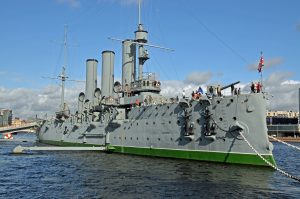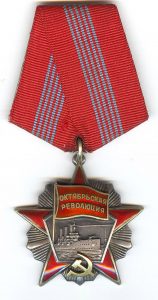- Author
- A.N. Other
- Subjects
- History - general, Ship histories and stories
- Tags
-
- RAN Ships
- None noted.
- Publication
- March 2016 edition of the Naval Historical Review (all rights reserved)
By Walter Burroughs
Many great maritime nations have been able to preserve fine examples of their prestigious naval vessels. Most of us have been brought up on tales of the 100 gun first-rate ship HMS Victory and her triumph at Trafalgar. This was at the height of Britannia’s mastery in building wooden walls when her hull was already forty years old. Of slightly later vintage is the magnificent 44 gun USS Constitution and although classed a frigate (she is longer than Victory and of similar beam) capable of threatening any ship-of-the-line. Her timbers were so strong they could resist British cannon, hence her nickname ‘Old Ironsides’. In later times in the 1890s, the Japanese ordered a 12-inch gun pre-dreadnought battleship Mikasafrom the British yard of Vickers which became famous as Admiral Togo’s flagship during the Russo-Japanese War.
Another perhaps less well known ship, which won her spurs during the Russo-Japanese War, is the Russian protected cruiser Aurora.1She isof distinctive design with three funnels and was one of a class of three 6-inch cruisers intended for service in the Pacific. Built at the Admiralty Shipyard St Petersburg, she commissioned in 1903. This shipyard, which still functions today, was founded by Peter the Great (1672–1725) who was also known as the ‘Carpenter’ for his prowess as a shipbuilder, learnt as a young man when working under an assumed name in Holland.

Traditionally Russian capital ships were named by the Tsar, usually after warriors, but in this instance the last Emperor of All Russia, Tsar Nicholas II, chose a female name, that of the mythological Goddess of Dawn. Perhaps it is this name that endears her to the Russian people. It is also noteworthy that unlike many of her sisters which after the revolution received name changes reflecting Soviet themes Aurora retained her original Imperial name.
Aurora was almost immediately required to steam with a Russian fleet the vast distance of over 18,000 nautical miles from the western extremity of the Russian Empire, around the southern tip of Africa, to the eastern seaboard to confront the upstart Japanese. Shortly after leaving home waters she was involved in the confused Dogger Bank Incident2where in reduced visibility, she was slightly damaged by friendly fire, killing the ship’s chaplain and a sailor. During their passage to the Far East the fleet was beset with engineering and logistical problems which slowed progress. Sailors amused themselves bringing unusual pets onboard. Writing later memoirs the ship’s doctor says how frightening it was sleeping on the cruiser and sharing her deck space with two live crocodiles, boa constrictors, lemurs, turtles and chameleons.
In the devastating Battle of Tsuhima Aurora, although damaged, performed well with her captain and 14 crew killed in action, when the executive officer, although wounded, assumed command. She became flagship of Rear Admiral Oskar Enkvist and provided cover for slower ships making their escape through the Japanese cordon. Aurora and two other cruisers made for the neutral port of Manila where for a period all three ships were interned by United States authorities. In 1906 Aurora returned to the Baltic and became a cadet training ship. In WWI she operated in the Baltic performing patrols and shore bombardments. In 1915 her armament was upgraded to fourteen 6-inch guns. The next year she was moved to Petrograd (renamed from St Petersburg) for a major refit.
At this time the city was brimming with revolutionary ferment and most of her crew, encouraged by workers propaganda, joined the Bolsheviks who were preparing for a socialist revolt. Relationships between the Tsarist officers and men became strained, and the officers resorted to the use of small arms to restore order. On 28 February 1917 during one of these altercations the Captain was killed and another senior officer wounded. The crew then formed a workers’ committee and voted on a replacement commanding officer, then with the red flag hoisted Aurora became the first capital ship to embrace the Revolution.
On the eve of the Revolution the Bolshevik command ordered Aurora to close the Nikolayevsky Bridge, held by military cadets loyal to the Provincial Government. The ship carried out this assignment and then anchored not far from the bridge. Later that night at 21:45 on the 25thof October 1917 at a pre-arranged signal a blank shot was fired from Aurora’sforward gun mount to begin the assault on the Winter Palace3, then seat of the Provincial Government. This shot also signalled the momentous commencement of the October Revolution. In 1918 Aurora was relocated to the naval dockyard at Kronstadt and placed into reserve. Her 6-inch guns were removed and placed on floating batteries to be used by Red armies in the continuing civil war.
Order of the October
RevolutionIn 1922 Aurora returned to service as a proud training ship, visiting most neighbouring countries whilst cruising through the Baltic and into the North Sea. Many thousands of her young trainees were to serve in the Russian Navy during the Second World War. During WWII her guns were again demounted and used for defence in the horrific three year Siege of Leningrad (ex Petrograd). The ship was docked at nearby Oranienbaum, which remained in Russian hands, and was repeatedly shelled and bombed by surrounding German forces. On 30 September 1941 she was damaged and sank in the harbour but with her masts protruding above the waterline defiantly flying the Russian ensign from her mainmast.

Revolution
After extensive repairs from 1945 to 1947 Aurora was moored in the Neva River in Leningrad (from 1991 again known as St Petersburg) as a monument to the Great October Socialist Revolution. Here in the long winter months she was held fast by thick ice only to become alive again in spring. In 1957 she became a museum-ship and on 22 February 1968 was awarded the Order of the October Revolution, whose badge portrays Aurora herself. In September 2014 after many years off the embankment of the Neva River crowds cheered her as she was towed to dock at Kronstadt4for a much needed refit enabling her to return to her usual berth in pristine condition in time for the centenary in 2017of a Revolution which changed the political face of world.
RFS Aurora is a truly remarkable ship which served through three major wars and uniquely played an important part in a great period of revolution. Having rebelled against her Imperial masters she might be accurately described as the first ship of the Soviet Navy.
1 Australians may be more familiar with another Auroraof the same vintage which was the vessel used firstly by Sir Douglas Mawson and later by Sir Ernest Shackleton in their Antarctic explorations between 1911 and 1917. See NHR March 2012.
2 In the Dogger Bank Incident on the night of 21/22 October 1904 British trawlers were mistaken for enemy torpedo boats and in the resulting melee were fired upon, with some boats sunk with loss of life and the Russian warships also fired upon each other. Following this incident use of the Suez Canal was denied to the Russian Fleet which severely increased the distance and time taken to reach the Far East and may have impacted their battle readiness. This should not be confused with the later Battle of Dogger Bank between British and German warships on 24 January 1915.
3 The Winter Palace is now part of a complex of four palaces known collectively as the Hermitage.
4 Kronstadt, 30 km west of St Petersburg, guards the seaward approaches to the city and was the traditional home of the Baltic Fleet.




